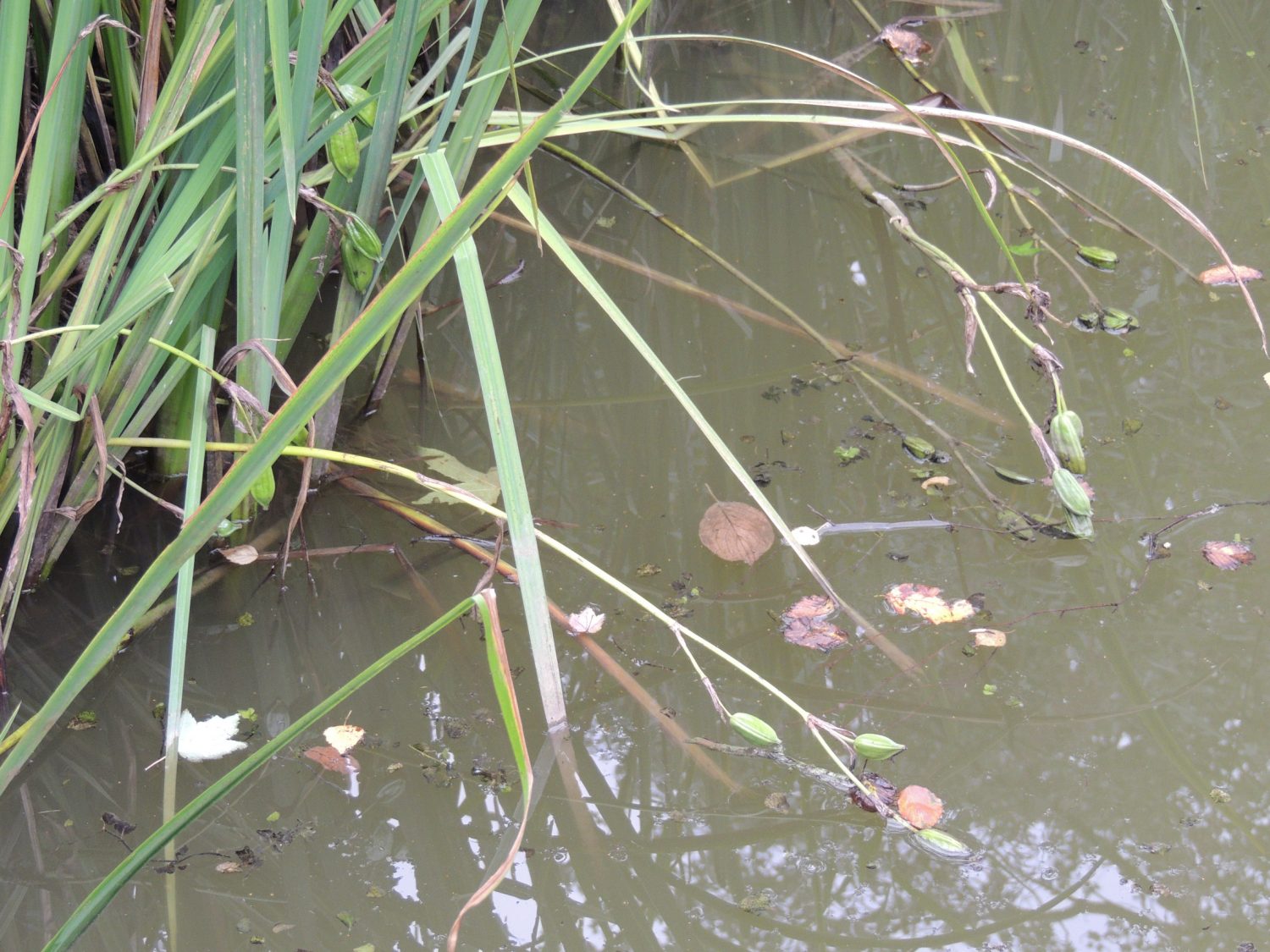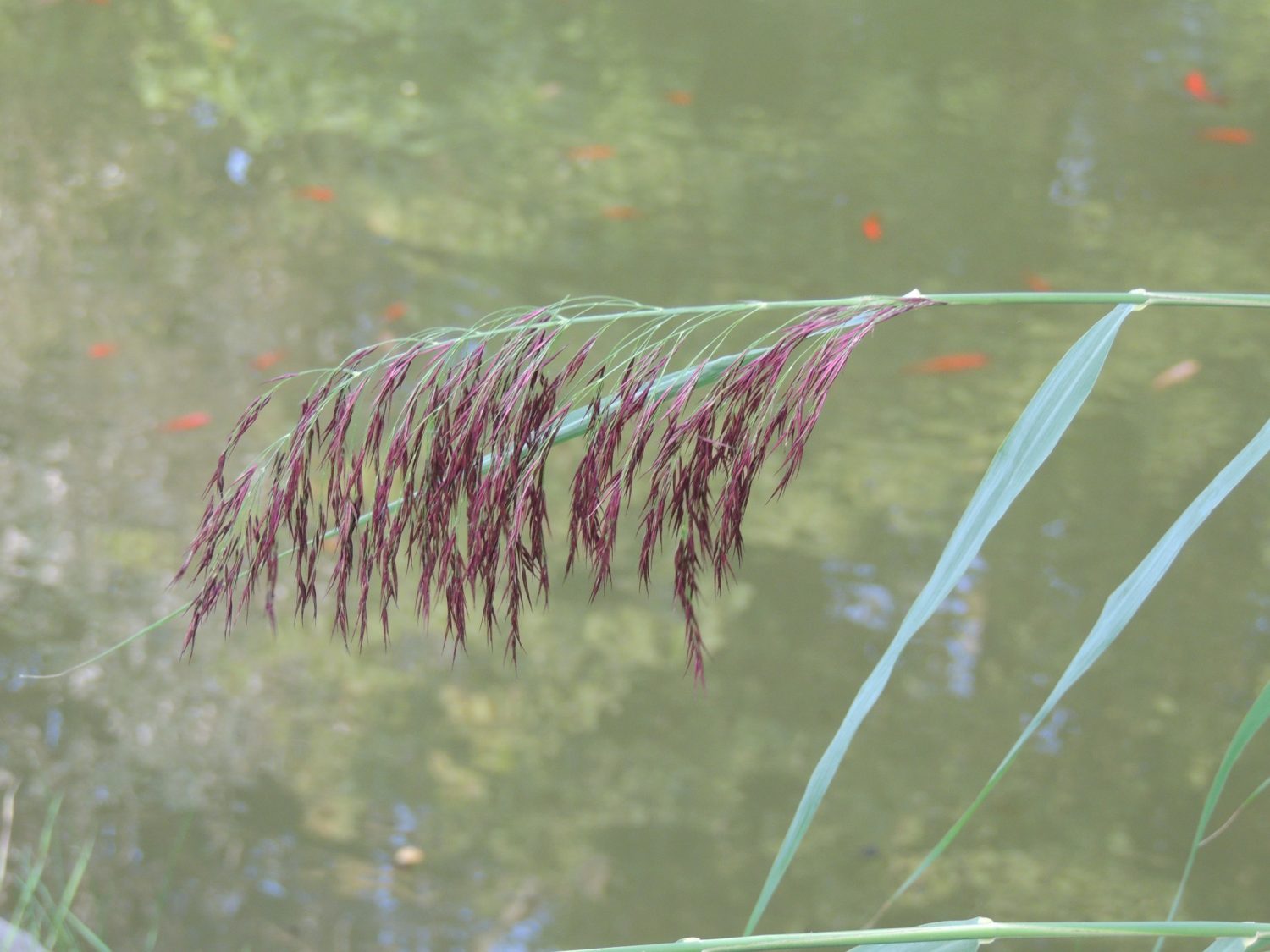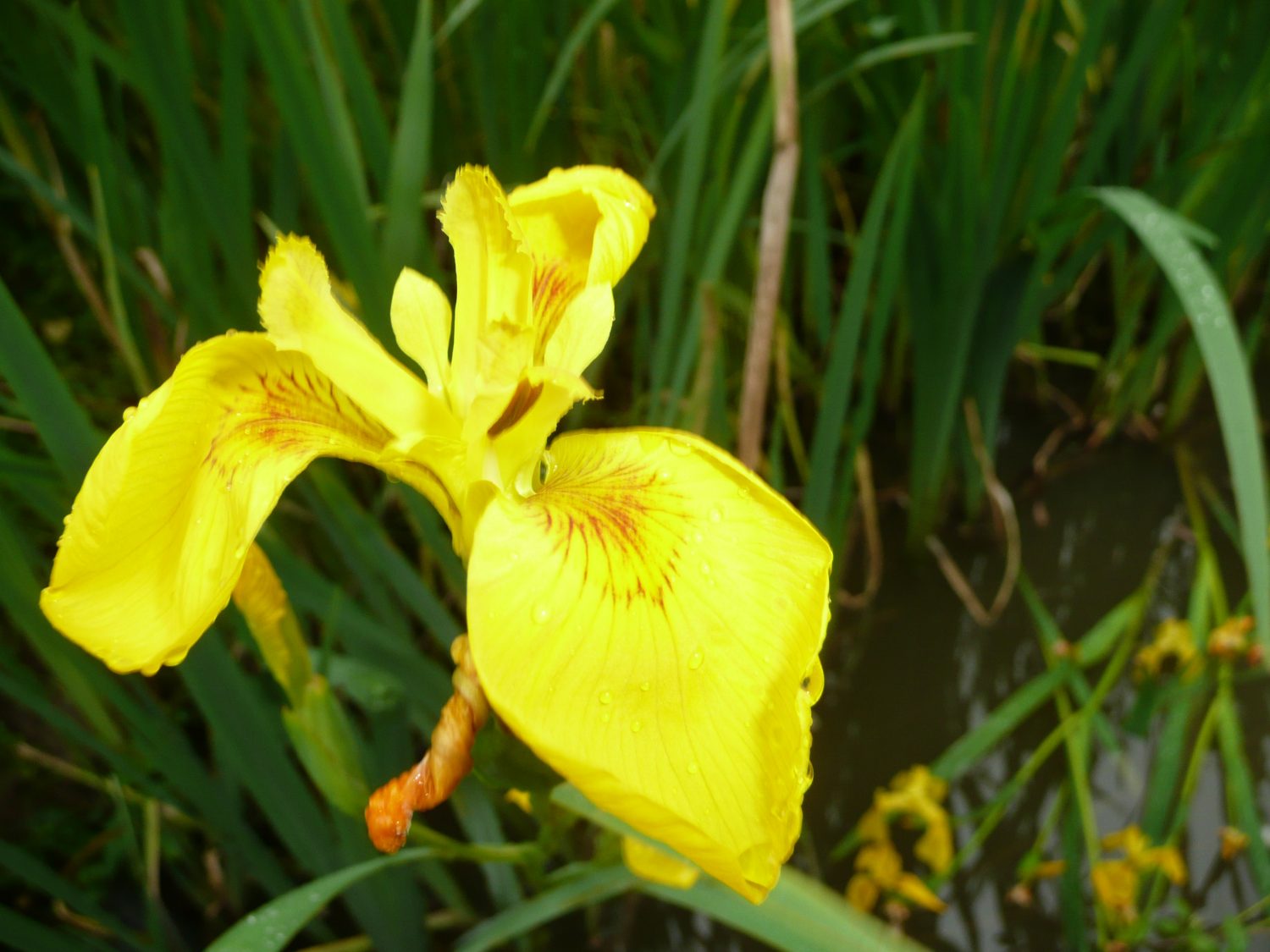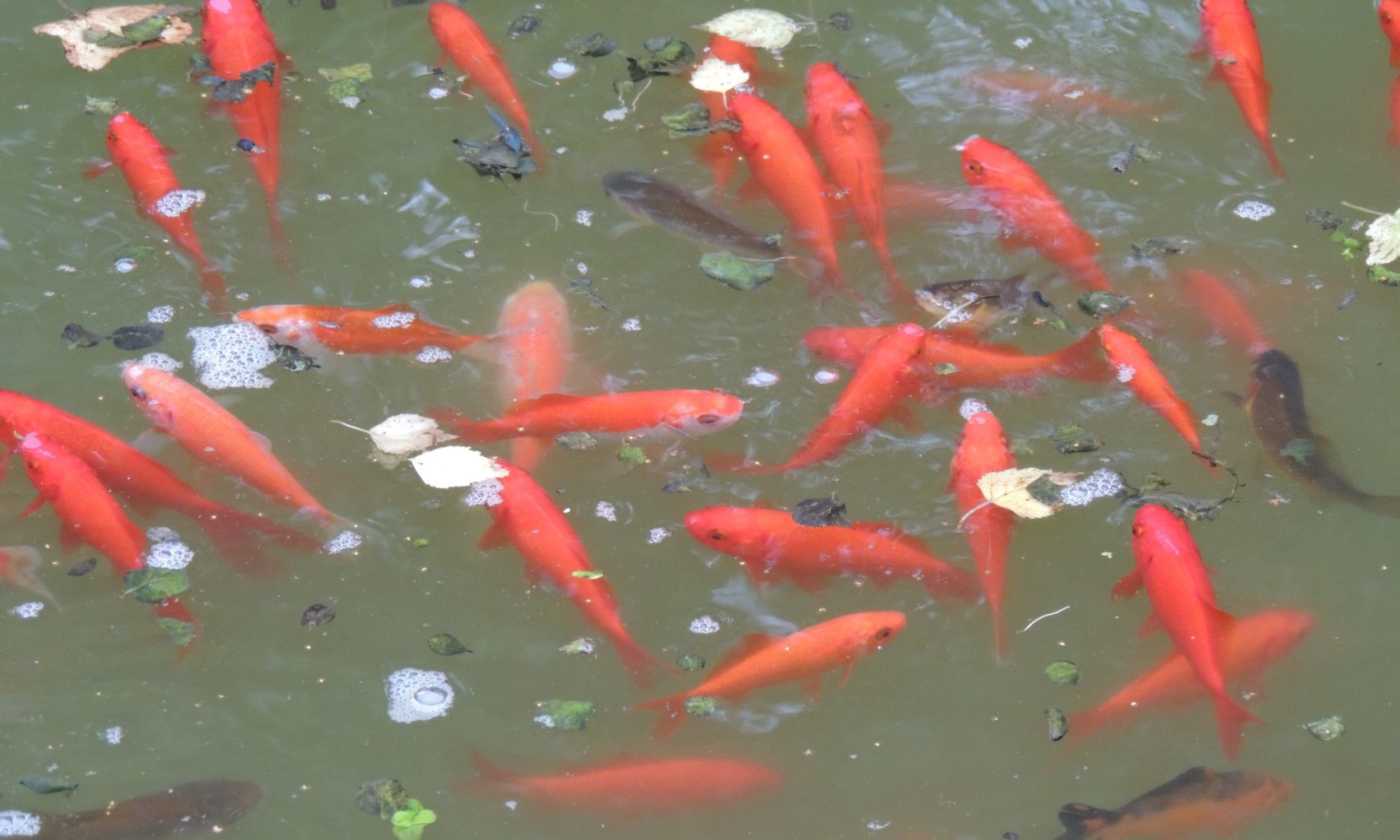The predecessor in our cottage who lived on the Isle of Oxney for many years before leaving for the depths of Herefordshire, wrote such an interesting letter to us following a query we had about a particularly damp area of the garden – a broken land drain? Her depth of knowledge about the Isle and its history was impressive and so informative.
The Isle was, of course, just that at one time, an island ‘with the River Rother lapping its shores’ and with the name being derived from the custom of keeping cattle in the area. Natural springs would have provided water for both livestock and the inhabitants of the Isle too, and settlements would have been established next to these sources of water. However, once the land became ‘enclosed’ in the eighteenth century, it was essential that rainwater was collected and thus ponds were dug in fields and near dwellings where there was no natural spring.
With a Wealden Clay substrata on top of Ashford Bed Sandstone it would have been hard work to dig out a pond but labour was cheap in those days and the collection of rainwater obviously essential for cattle are thirsty drinkers. Once the diggers had reached the clay, the pond would have been ‘puddled’ and the sides and the floor would have been flattened with spades. The clay then would have been compacted by pinioning geese and ducks put in the pond once there had been some fresh rainfall. This was the perfect means of sealing the clay enough to prevent water filtering away. There were no butyl linings in those days. If you wander through the Weald it is astonishing how many ponds of varying sizes there are – some, of course, are now in gardens but many fields have them and some more than one. I suppose that once these large fields with more than one pond were originally divided by native hedging into smaller fields but, of course, many of these have, unfortunately, been lost over the years.
So ponds provided fresh water for both the house and for the livestock who would be brought to water in the mornings and then later in the day if the pond was nearer the house than to their grazing. Many ponds would have had some sort of jetty – usually of oak – making it easier for the household to access water.
Our pond is very near the house so sensibly an overflow channel was dug to connect to a boundary ditch. The visiting heron is often to be found standing on the edge of this ditch choosing which fish to have for his supper. I gather there is a heronry not so many miles away which can be seen from the tower of Lydd church when it is open. In May last year there were ten active nests up in the old holm oak across the road from the church. I have often wondered where herons breed as we only seem to see them as solitary birds.
When we arrived the native water lily (Nymphaea alba) had almost completely covered the pond and was rearing up as its leaves were so overcrowded. In an effort to thin the lily out a little we bought a few small ghost carp. Well, they did the trick but now we have no lilies at all and rather fewer dragonflies, newts and frogs as the fish have multiplied and grown so. Of course, historically visiting birds would have brought in fish eggs on their feet and new ponds were soon colonised.
The pond is home to a fringe of the common reed, Phragmites australis, which at this time of year has lovely purplish flower heads which are wind pollinated. Worldwide this invasive plant has myriad uses and is a useful habitat for wildlife. In this country it is used for thatching and is used in natural sewage treatment systems. The yellow iris (Iris pseudacorus) that grows with it has started to be overwhelmed but clearing the reed will be quite a job as it puts down tremendous roots which are formed from horizontal runners which set down roots at intervals. In perfect conditions the reed has been known to spread 16 feet or 5 metres a season. Help! In parts of the USA schemes to eradicate the reed have involved burning it off over a couple of seasons but if they are growing deep in a pond surely that could be particularly tricky.
The yellow flag is much more decorous in its habit although it too is fast growing and spreads by both rhizomes and seed, the seed being water borne, but it is a rich yellow and rather lovely. Should the flags start to overwhelm other plants, perhaps in a smallish pond, they can easily be lifted and the rhizomes split and the roots and leaves cut back as you would with the irises in your borders. Replanting them in aquatic baskets would restrict their spread in the future.
Other plants growing by this particular pond are various forms of willow and cornus. I particularly like the willow, Salix purpurea ‘Nancy Saunders’ which has rather elegant blue grey leaves and also the unusual S. udensis ‘Sekka’ which is also known as the Dragon Willow and is much used in oriental flower arrangements. The stems of this spreading willow are flattened in part and in the spring you have the treat of silvery grey catkins growing upright from the stems. A group of mature Salix alba ‘Britzensis’, regularly coppiced, provides bright red new stems in the winter. Cornus too enjoy the damp conditions and provide shelter for a family of moorhens who seem to be a permanent fixture. No duck ever bring up their young here, maybe that is because of the moorhens’ presence and to date thankfully no Marsh frogs have made their way to the pond although we can hear them in summer across the road in one of the field ponds. Maybe I’m in a minority in not really wanting them croaking right outside the window here but they have their supporters, one of whom has posted on YouTube a rather wonderful film of them taken on the North Kent marshes and they are certainly loud, very loud.
TEST
The seed pods of the Yellow Flag flower
TEST
The flower of the Common Reed
TEST
Yellow Flag
- words: Sue Whigham
You may also like
Go with the Flow
Sue Whigham shares some valuable new-to-gardening advice I’m sure that by now we should be used to the rain but I’m not entirely sure that we are. We had a dry, sunny day the other day and how everybody’s mood...
Farm Fables
Jane Howard gets to the bottom of why so many ponds have disappeared across the High Weald I have a new passion, almost an obsession, it’s about ponds. And there’s a distinct possibility I might become a bit of a...
Hedge Issues
Sue Whigham takes a meander along nature’s verdant and vital corridors Recently the BBC’s Today programme carried a feature about England’s hedgerows which created a lot of interest among listeners. On the strength of that, Martha Kearney interviewed one of...















